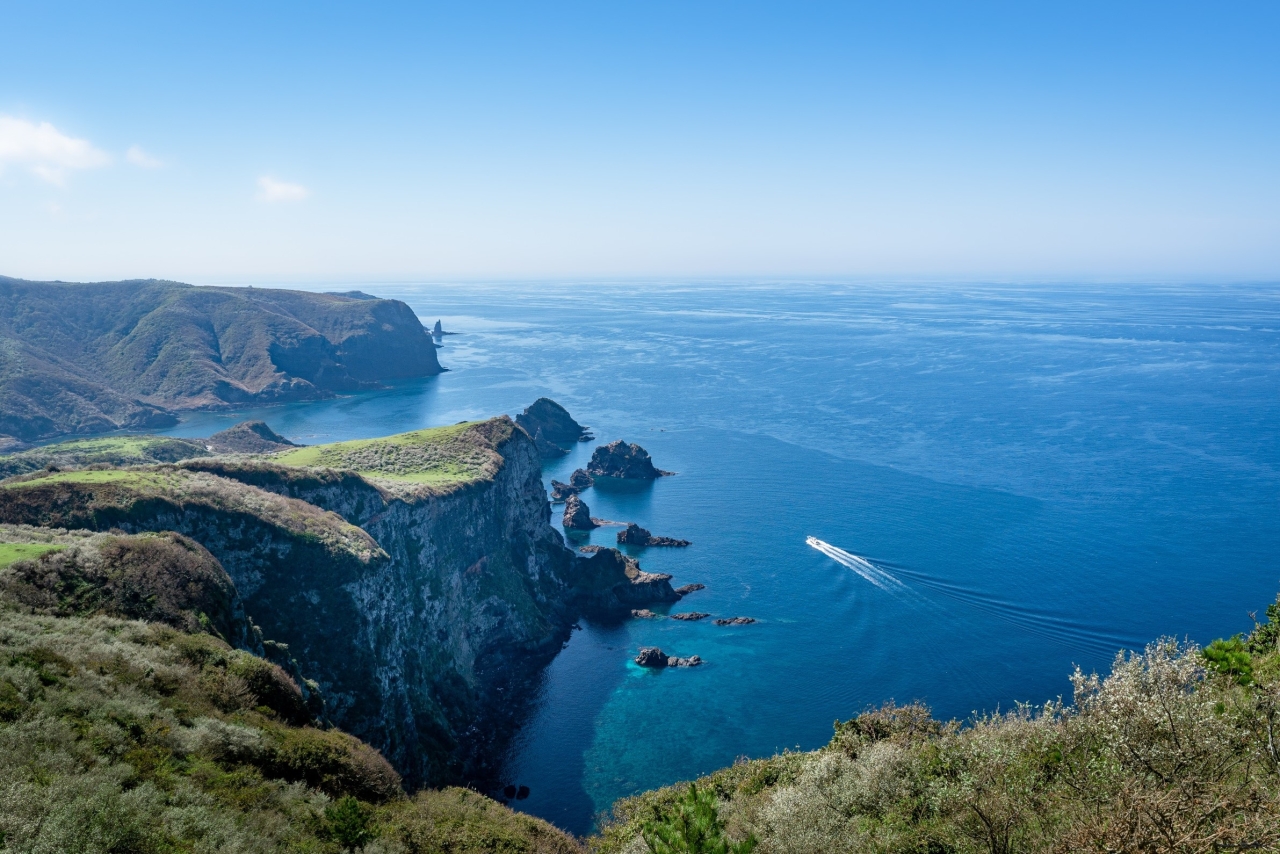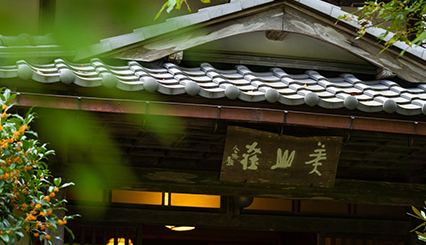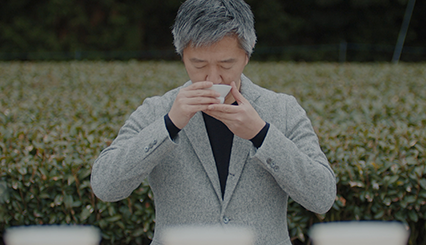CASE STUDY
Search by area
Search by keyword
- All
- Ryotei & Restaurants
- Lodging/Hotels
- Producers
- Technology
- DX (Digital) & SNS
- City Planning
- Utilization
- Gastronomy and Culinary
- Japanese Nature
- Japanese history and traditional culture
- Japanese Food Culture
- Agriculture
- Fisheries
- SDGs
- Local production for local consumption
- Foreigner Activation
- Experience
- Overseas Expansion
- Fermentation
- Public-private partnerships and collaborations
- Sake
- Community Revitalization
- Spirituality
- Japan of the Sea
- Mountain Japan
VIEW ALL
-
Chugoku
19 Finding Value in What Is Available The Fascinating Nature, People, History, and Food Culture of the Oki Islands
The Oki Islands are located 40–80 km north of the Shimane Peninsula. The Oki Islands consists of 180 islands of various sizes, four of which are inhabited, and blessed with abundant nature. These nature-rich remote islands have long been a place for interaction between people and culture. Historically, there were well-known as the place where Retired Emperor Go-Toba and Emperor Go-Daigo were banished, while the islands also flourished as a stopover for ships sailing the Sea of Japan during the Edo period. The rich and diverse cultures that have developed throughout this long history has been carried on to the present day. Fascinated by the charming way of life, many people have also moved to the Oki Islands. Records of the Oki Islands appear as far back as in the Kojiki, or Chronicles of Japan. Looking back on this history, today these migrants are working to create a new future for the islands. As remote islands, there are some things that are “missing” from the islands. However, people here have realized what “exists” only on these remote islands.
Read more -
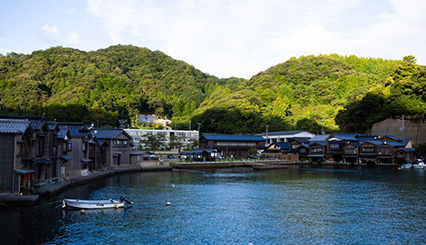
Kinki
14 Lifestyles in Close Proximity to the Sea.An Area that Brings Together Sustainable Development and Unique Attractions—Ine Town
Ine Town, located in the northern part of Kyoto Prefecture, is known for its funaya, or wooden boathouses. One of the most scenic spots in Japan, the town is frequently used as a filming location for movies and TV dramas. Visitors to Ine Town can experience what it is like to live closer to the sea than anywhere else in Japan. The sea and the fish within it could not be any closer. What is the best way to communicate the unique charms of Ine Town to the wider world? Today, the ideas of Ine locals are gradually taking shape. Be it initiatives to promote the area’s unique seasonal delights, including early summer oysters, autumn squid, and winter yellowtail; accommodation limited to one group per day where guests can fully enjoy being right next to the sea; or new tourism projects to further vitalize the town. Locals are steadily making progress toward the future while balancing the history and nature of Ine Town with entirely new elements.
Read more -

Kita-Kanto
7 Become a Kurabito. Enhancing the Value of Japanese Sake through a New Form of Sake Brewery Tourism
KURABITO STAY and Kitsukura Shuzo have teamed up to offer a completely new sake tourism program within the grounds of a 330-year-old sake brewery. This new program enables visitors to stay at a renovated, century-old lodging that was used by former kurabito, or sake brewers, at the Kitsukura Shuzo sake brewery in Saku, Nagano Prefecture. In addition to enjoying locally produced sake and delicious local dishes during their stay, guests can take part in the sake brewing process. It is an activity that fans of Japanese sake will want to experience at least once. Held on weekends only, since its launch in March 2020, the special program has been so popular among guests that some have even come back for more. KURABITO STAY, Inc. is the company responsible for developing and running the program. President Marika Tazawa’s aim is to boost sake-related tourism, engage in new branding activities for sake breweries, and promote tourism that brings joy to everyone involved.
Read more -
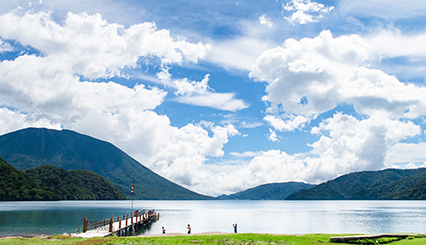
Kita-Kanto
5 Local Tochigi Culture and Ingredients at The Ritz-Carlton, Nikko
The Ritz-Carlton, Nikko opened in July 2020 on the shores of Lake Chuzenji in Okunikko. The luxury hotel sits in an area that is home to the shrines and temples of the Nikko area—where also have been designated a UNESCO World Heritage Site—abundant natural surroundings, rich culture, and ancient history and tradition. Today, it has grown into one of Japan’s leading and often fully-booked hotels. Interestingly, Okunikko in Tochigi Prefecture is recognized to be Japan’s oldest holiday resort, and is now host to a cutting-edge facility in The Ritz-Carlton, Nikko. In addition to its globally acclaimed level of service, the hotel has garnered attention for the thorough harmony and coexistence it has sought to achieve with the area through the creation of business ecosystem, be it in the food, guest activities, or the interior design and finer details.
Read more -
Kinki
4 Enjoying Rustic, Exquisite Tsumikusa Cuisine Surrounded by Unchanged Japanese Landscape and Culture
Just under an hour from central Kyoto up steep mountain roads in the Hanase region—often referred to as one of the “back rooms” of Kyoto—is a discreetly positioned inn named Miyamasou. Miyamasou was first established in 1895 as a guesthouse of Bujo-ji Temple. Today, Miyamasou is a place where guests can go back in time and experience the lifestyles of ancient Japanese villages. In a sukiya-zukuri style building designed and constructed by master carpenter Sotoji Nakamura, guests can enjoy a range of rustic dishes that are made using ingredients from the mountains which were hand-picked by chefs. These unique ingredients include wild herbs and wild flowers, fresh water fish such as sweetfish and amago, wild birds, wild boar, deer, and even bear. Miyamasou removes guests from everyday life, providing them with a unique experience that they can fully enjoy with their five senses.
Read more -
Straddling the Shiota River in Ureshino, Saga Prefecture, the Wataya Besso hotel complex spreads across the 66,000-square-meter property to offer several hot spring baths, restaurants, and a large number of luxurious guest rooms. Even before the COVID-19 pandemic struck, long-established onsen ryokan (traditional hot-spring inns) across Japan had been struggling to survive changes in society and people’s tastes. Faced with these challenges, Wataya Besso’s industry-leading initiatives are gaining attention. We talked with CEO Yoshimoto Kohara, the visionary behind innovative projects which extend beyond normal ryokan operations, including a new workcation office program that integrates all the best aspects of the ryokan, and an initiative in which the hotel serves as a hub for promoting the charm of the local area.
Read more
記事検索
キーワードから探す
- すべて
- Ryotei & Restaurants
- Lodging/Hotels
- Producers
- Technology
- DX (Digital) & SNS
- City Planning
- Utilization
- Gastronomy and Culinary
- Japanese Nature
- Japanese history and traditional culture
- Japanese Food Culture
- Agriculture
- Fisheries
- SDGs
- Local production for local consumption
- Foreigner Activation
- Experience
- Overseas Expansion
- Fermentation
- Public-private partnerships and collaborations
- Sake
- Community Revitalization
- Spirituality
- Japan of the Sea
- Mountain Japan
VIEW ALL


